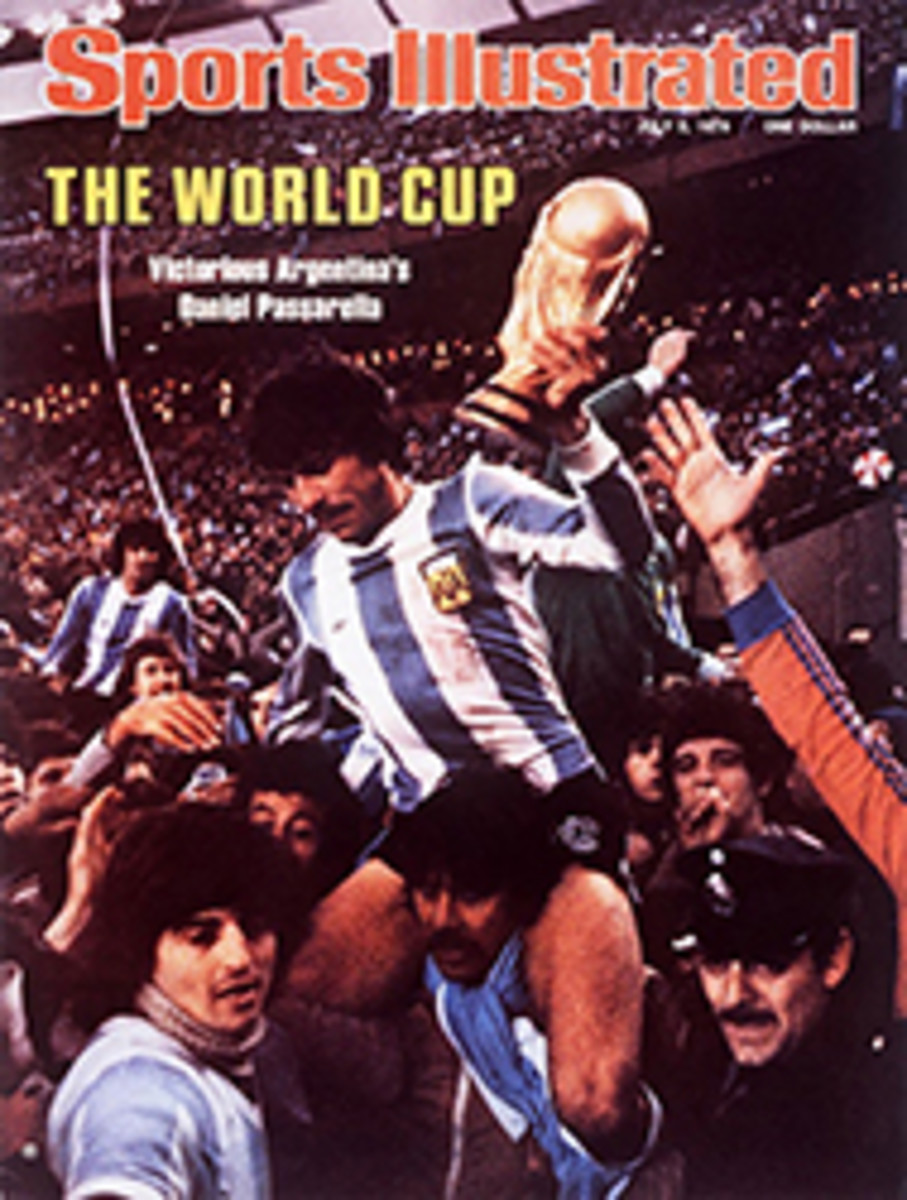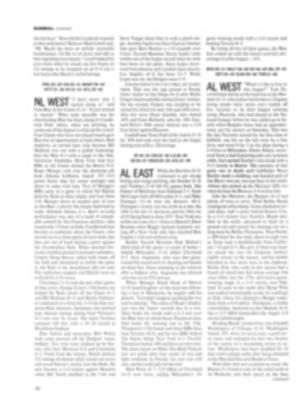
He's in love with his glove
In an era when players who bat .260 and can catch a lazy fly ball act as if they are all-world, it is, to say the least, rare to find an athlete with a career .296 batting average and three Gold Gloves who is humble, kind, unfailingly courteous, God-fearing and a lot of other good things. Philadelphia's Garry Maddox, who after six major league seasons has ever so quietly become the best centerfielder in baseball, is just such a man. The trouble is that hardly anyone knows it, because Maddox labors in the shadows of more famous Phillies—Greg Luzinski, Mike Schmidt, Steve Carlton, to name several—and never says a word about this misfortune.
Maddox, who was an infantryman in Vietnam, is a devout Bible reader, a devoted family man and a diligent charity worker. In the clubhouse he is unassuming and unobtrusive. On the field his wide-ranging style makes him as exciting as an outfielder can be. As a result, Maddox' teammates hold two opinions of him, both of which were recently expressed in one sentence by Catcher Tim McCarver. "Garry is a beautiful person," he said, "and also the best centerfielder I've ever seen. If I didn't believe that, I'd hedge. Remember, I played with Curt Flood, too. He was the best at going back to the wall, but overall Garry is better." First Baseman Richie Hebner agrees, saying, "Not only do I think Garry's the best, but I've also had umpires tell me that he is, right in the middle of games."
Pitcher Jim Kaat, who says, "Only Paul Blair comes close to Garry," has a special reason for appreciating Maddox. Like all pitchers, Kaat hates having a good pitch blooped to the outfield for a hit. Because Maddox plays very shallow, Kaat does not have to worry about Texas leaguers falling in center. Maddox also has the speed to race back to the wall or to plug the leftfield and rightfield gaps. In one of Kaat's starts this season, Maddox chased down 10 fly balls, two short of the major league record.
Maddox' defensive ability tends to obscure the fact that when the 1978 season began he was the 11th-best career hitter in the National League—and the first in lifetime average among centerfielders. Twice he has finished third in the batting race, hitting .319 with San Francisco in 1973 and .330 with the Phillies in 1976. At the end of last week his .302 again put him on the list of the league's leading batters.
Maddox was also among the stolen-base leaders with 20 in 22 attempts, but he says he will not be up there all season. Despite his speed, he has averaged only 22 steals a season, preferring to save his legs for roaming far and wide in the outfield.
Having every faculty at peak readiness in the field is important to the 6'3", 182-pound Maddox because he has studied the nuances of playing center the way Ted Williams analyzed the mysteries of hitting. "I do a better job of explaining how to catch the ball than how to hit it," he says. "I see the ball and I swing, that's it. I never know why I'm hitting bad or why I'm hitting good."
Perhaps a lack of analysis made it necessary for Maddox to learn the hard way that he could not be a power hitter in the majors. After slamming 30 homers for Fresno in 1971 and nine in 11 games for Phoenix in 1972, he moved up to San Francisco and hit only 12 the rest of the year. He also struck out a career-high 97 times and batted a career-low .266. Since then he has used a lighter bat, swung only to make contact and not worried where the ball went.
Last season, when the Phillies tried to make him their leadoff batter, Maddox was beset by quite different concerns. "It was my own fault," he says. "They told me not to do anything different, but I spent so much time thinking about what a leadoff man should be doing that for a while I couldn't hit anything." Maddox got only four hits in his first 40 trips to the plate and was batting .277 on June 26 when he was dropped back to sixth in the order to make room for newcomer Bake McBride. The rest of the way Maddox hit .307 and finished the year at .292, with career highs in homers (14) and runs (85).
To Maddox, batting is just something to do once every two or three innings. Playing centerfield is his full-time job. Before the start of every series he studies charts that show where opposing batters tend to hit the ball and discusses pitching strategy with Catcher Bob Boone. Knowing what pitches Boone plans to call and where batters are likely to hit them helps Maddox position himself and the other outfielders. "The hardest pitchers to play behind are the ones who mix their stuff up," he says. "Steve Carlton, for example, throws a hard slider and a slow curve, so I try to see the sign to get a better idea of where to play the hitter on each pitch."
Whether he is playing a batter to pull or to hit to the opposite field, Maddox is always closer to the infield than other centerfielders. In fact, Phillie Shortstop Larry Bowa calls him "a fifth infielder." "If you're playing deep you can never get to a ball hit in front of you," Maddox says, "but if you're 10 feet closer to the infield you can still get to the wall."
Maddox gets there not just because he is fast, but also because, like an infielder, he moves on every pitch as it is delivered. Once the ball is hit he runs on his toes instead of his heels, "so the ball doesn't seem to be dancing around."
Maddox toe-dances after every ball hit to the outfield, whether it is near him or not. He's a poacher, the kind of guy, says Phillie Manager Danny Ozark, "who would want to take every shot if he were playing basketball." "People have told me I'm going to wear myself out by being so aggressive," Maddox says, "but I like to go after every ball even if I can't make the play. If I think I can, I'll call for it, but the other outfielder can call me off if he wants to."
Smart positioning and quick reaction mean nothing if Maddox does not catch the ball once he reaches it. But that, he says, is the easy part. "Even on a ball hit to the fence, it's really not a difficult catch if I have time to get back and jump. The really tough ones are the balls you catch on the run or the sinking line drives."
Maddox also excels at fielding rollers and throwing. Before a game he will often take grounders at third so he can practice long overhand pegs. Comparing himself to Cincinnati's Cesar Geronimo, his closest rival for primacy among today's centerfielders, he says, "My arm is not as strong as his, but by playing in close and charging the ball I can prevent a runner from taking the extra base."
For all of his ability, he has never been on the National League All-Star team, because of the popularity of his more luminous teammates. When last week's interim returns for this year's team were announced, he was again not among the starting outfielders. This sort of neglect does not bother Maddox, who claims he could quit baseball tomorrow if he had to and not suffer any psychological hangover. "The only thing that really matters to me in baseball is that I have the respect of my teammates," he says.
They respect him, all right. They think he's the best.
PHOTO

